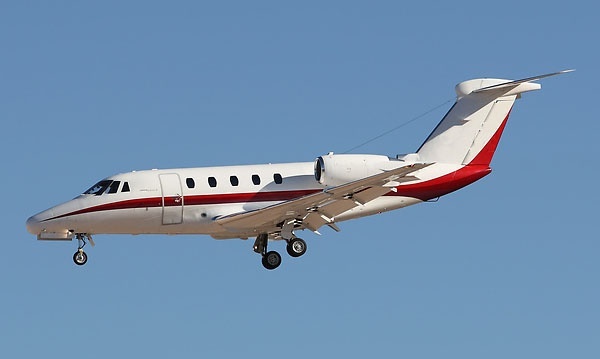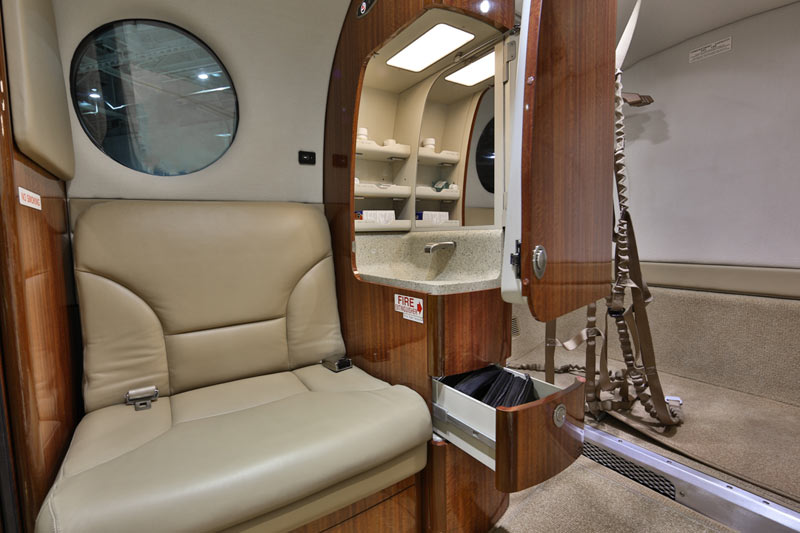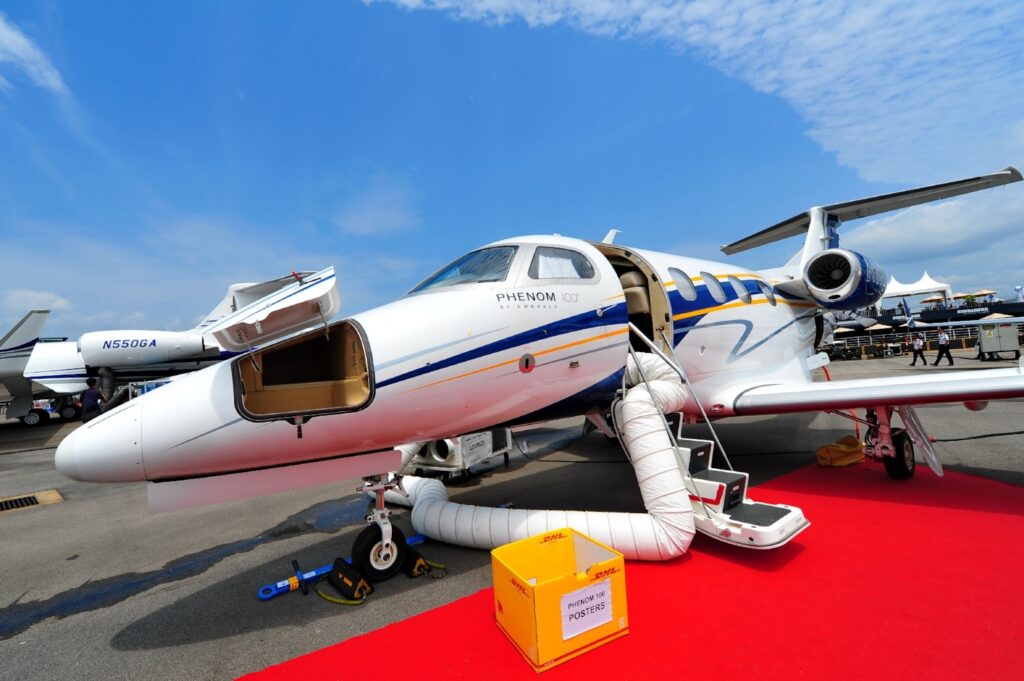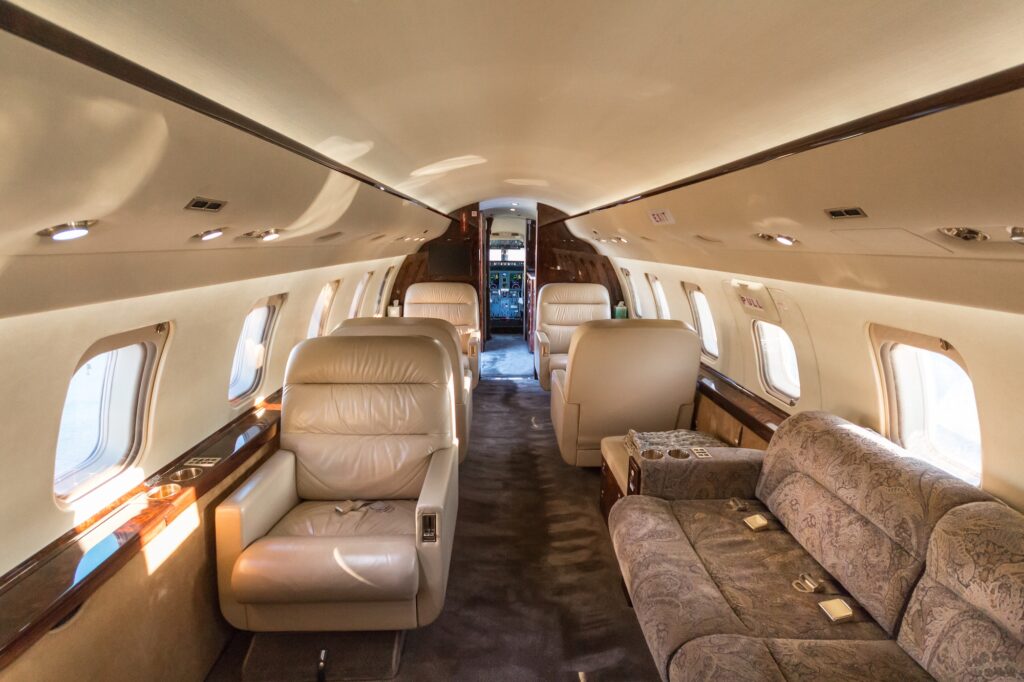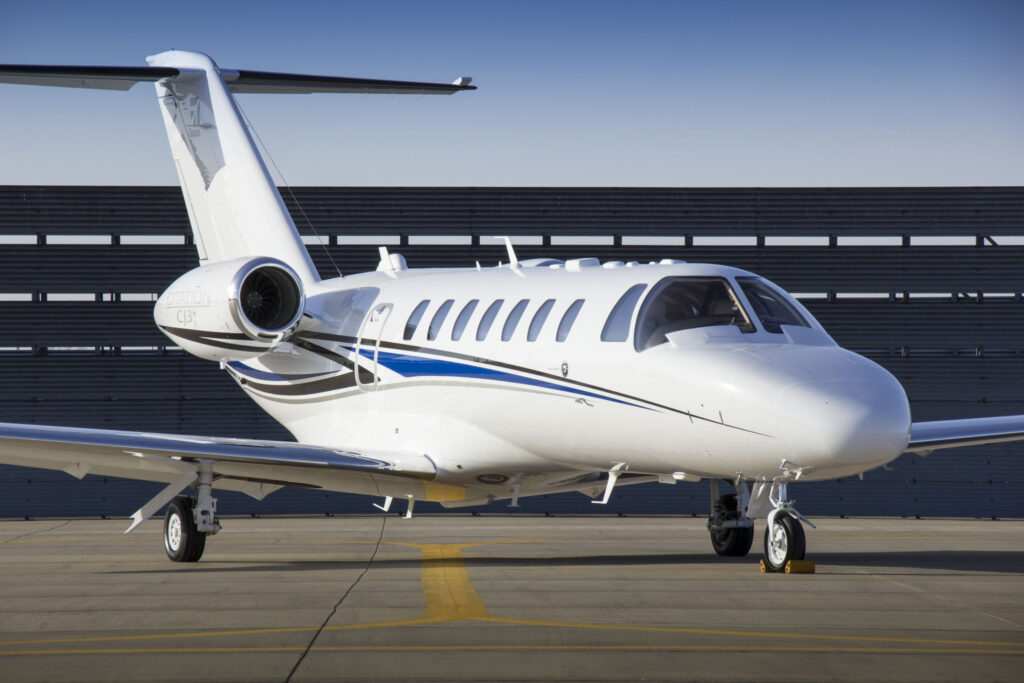Citation III
While the Citation I and II were created to compete more closely with turboprops, Cessna decided to move forward with a midsize Citation to penetrate the growing corporate jet market. The Citation III was FAA certified in 1982. It typically seats eight passengers with two pilots. At the time of its introduction, it set multiple midsize jet performance records, including time-to-climb and cruise speed.
The Citation III, equipped with two Garrett TFE731 (now Honeywell TFE731) engines, has a normal cruise speed of 416 knots, a range of 2,470 nautical miles, a climb rate of 3,699 feet per minute, and requires approximately 5,489 feet of runway to takeoff and 3,213 to land.
Citation VI
Cessna initially planned to produce the Citation IV with larger fuel tanks and a longer range than the III, but instead cancelled the program and moved on to the Citation VI. The Citation VI was created as a more economical version of the Citation III, built with the same airframe and engines, but equipped instead with a more basic avionics package and a standardized, generic cabin interior.
The Citation VI performance specs are nearly identical to the Citation III. It has the same TFE731 engines, has a normal cruise speed of 416 knots, a range of 2,345 nautical miles, a climb rate of 3,699 feet per minute, and requires 5,489 feet of runway to takeoff and 3,214 to land.
Citation VII
Parallel to the production of the Citation VI, Cessna began production on the Citation VII. Like the VI, the VII was built on the same airframe as the III, but was given significant performance enhancements due to its upgraded engines, although it did take a hit to its range.
The Citation VII comes equipped with two Garrett TFE731-4R engines, each of which puts out 550 more pounds of thrust than the engines found on the III and VI (4,200 compared to 3,650). The Citation VII has a normal cruise speed of 440 knots, a range of 1,824 nautical miles, a climb rate of 4,315 feet per minute, and requires approximately 5,041 feet of runway to takeoff and 3,437 to land.
[ulp id=’ksrvpykbSKmvluGu’]

